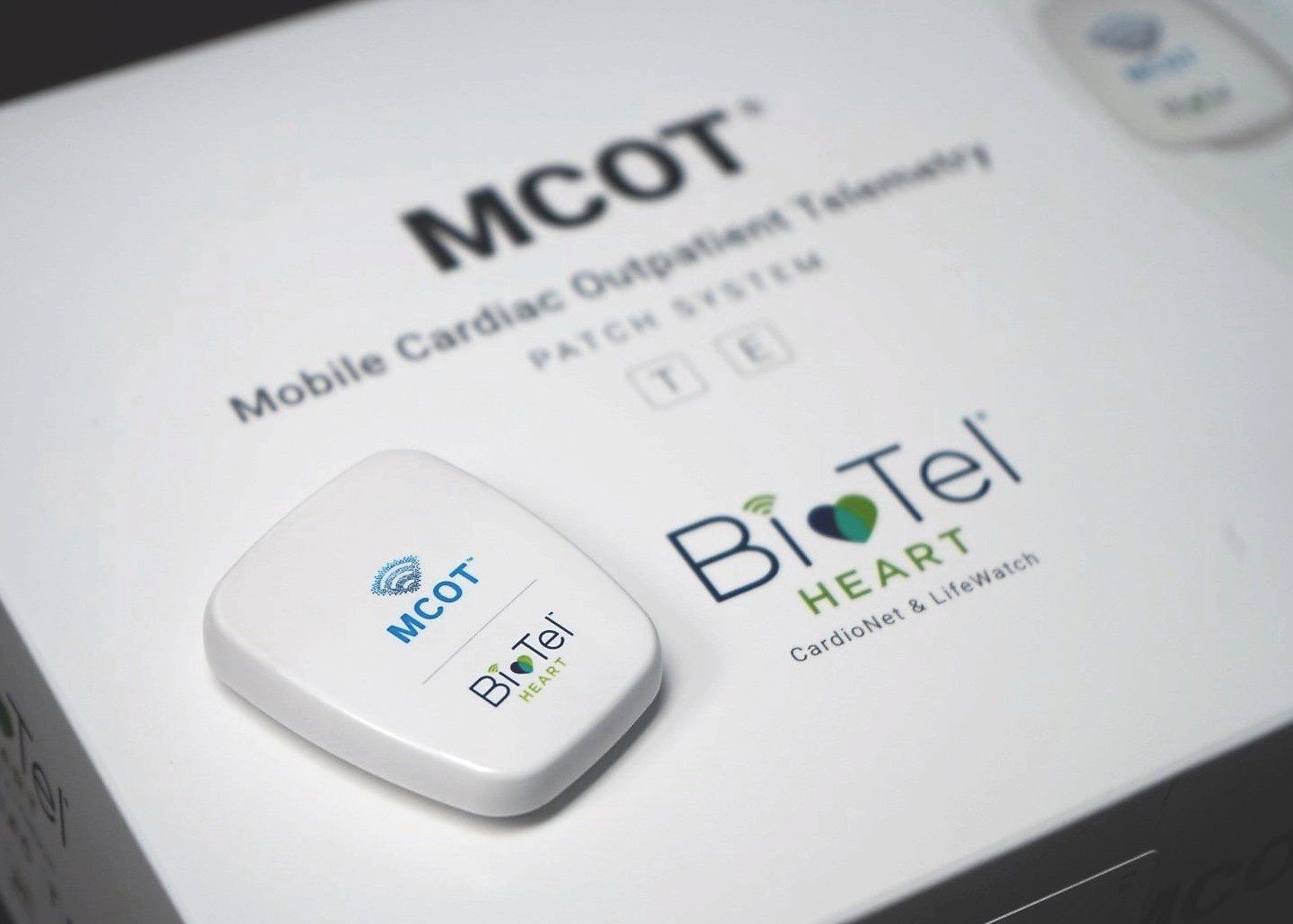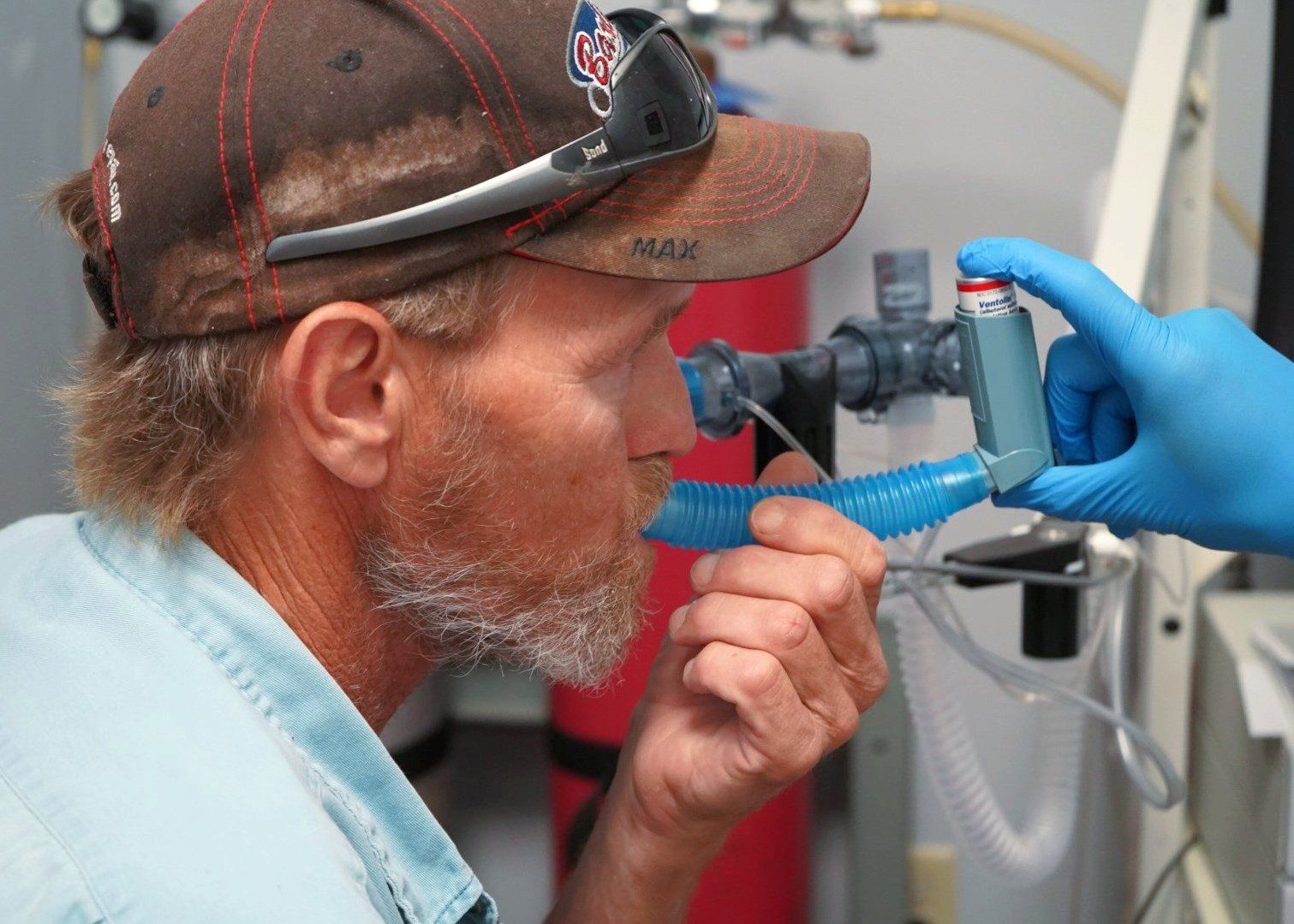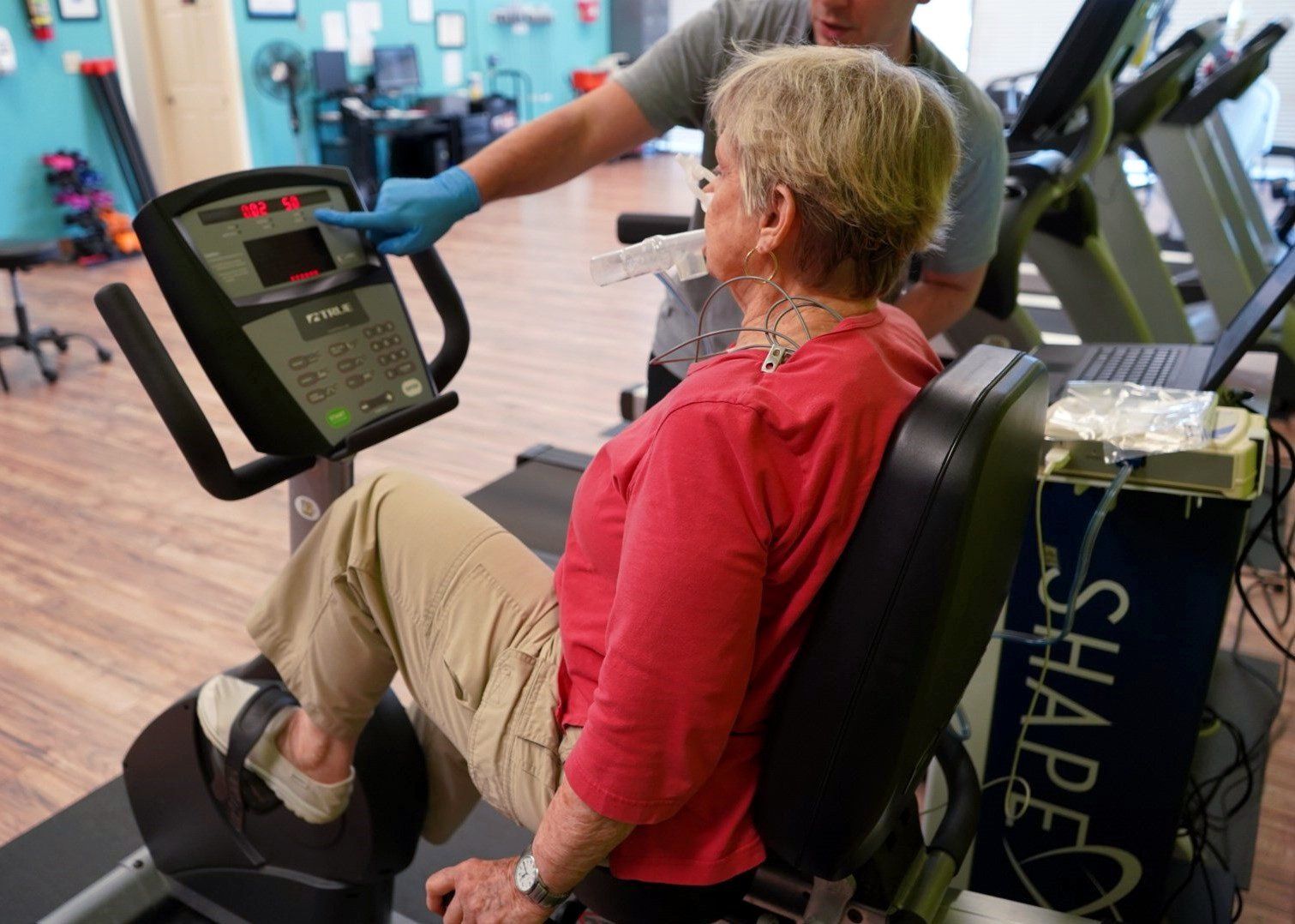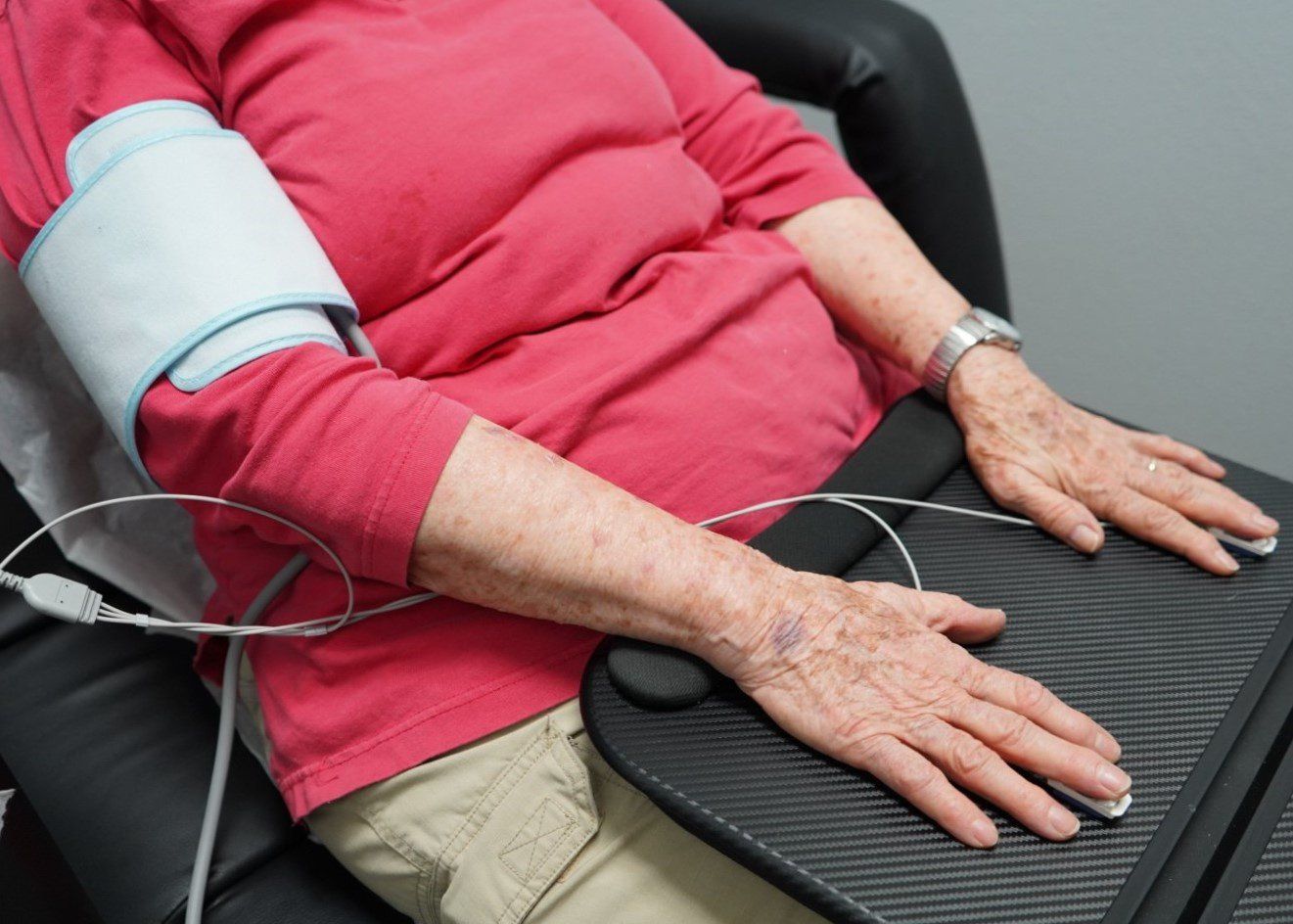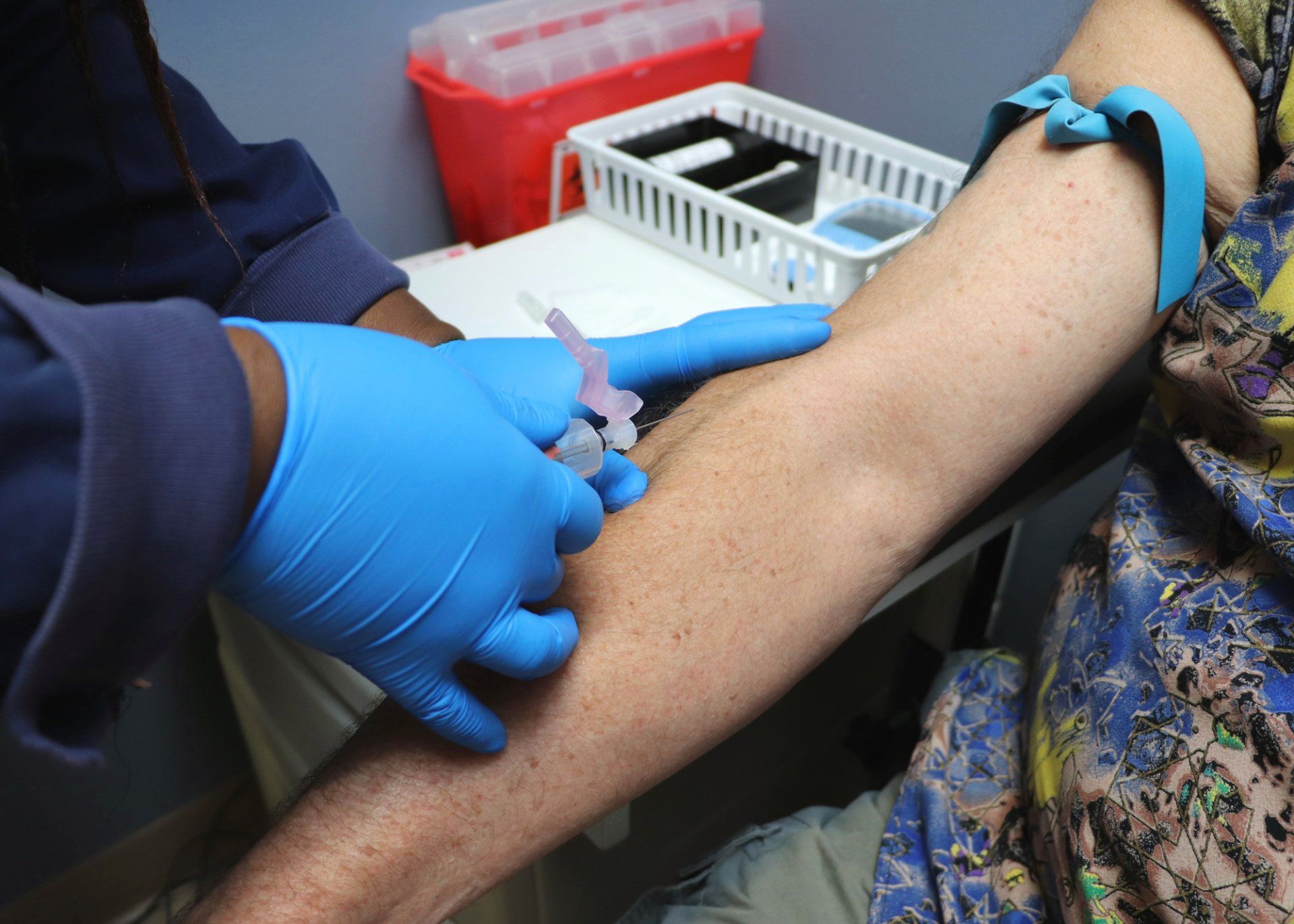Testing
Pulmonary Function Tests (PFTs)
- A group of breathing procedures that measure how well the lungs are functioning
- Helps your doctor assess respiratory diseases and disorders such as shortness of breath, smoking history, asthma, chronic obstructive pulmonary disease (COPD), emphysema, and mechanical injury
- Scheduled every 6 months on patients who take Amiodarone or Pacerone to make sure lung function is not being affected by these medications
- No prep necessary
Cardiopulmonary Stress Test (CPX)
- Measures how well your heart and lungs are working during rest, exercise, and recovery
- Patient is hooked up to an EKG machine, and blood pressure, heart rate, and oxygen levels are measured
- Patient will wear a mouthpiece and nose clip
- During the exercise portion of the test, the patient may pedal with their arms, ride a bike, or walk on a treadmill
- Please wear comfortable clothing and tennis shoes
- No prep necessary
Cardio Wellness Risk Evaluation (VENDYS)
- Also known as Endothelial Function Test
- Involves obtaining an EKG and blood pressure, discussing diet and exercise habits, and completing a blood flow test called VENDYS
- VENDYS is a noninvasive diagnostic device used to measure blood flow for early detection of cardiovascular disease and monitoring response to therapy
- The VENDYS test is 15 minutes long, broken down into three 5-minute phases:
- The first five minutes records a stable temperature reading on the patient’s left and right finger
- During the next five minutes, the blood pressure cuff that is placed on the patient’s right arm is inflated and stays inflated for the whole five minutes
- After the occlusion phase has completed, the cuff will release and allow for the blood flow to return to the patient’s fingers for the last five minutes
- No prep necessary
Clinical Lab
- Most labs can be performed in house
- INR, used to monitor patients on blood thinners, performed in house with immediate results
- Advanced lab tests can be sent out, with results still appearing on the patient portal
- Special prep:
- Liver/Lipids (Cholesterol) – nothing to eat 4 hours prior to testing
- Before any blood draws, being well-hydrated by drinking plenty of water is always helpful
Phone:
501-315-4008 (or toll free
1-866-811-3419)
Phone:
501-315-4008
(or toll free
1-866-811-3419)
Fax: 501-315-3411
1000 Hwy 35 North, Suite 8
Benton, AR 72019
- Mon - Fri
- -
- Sat - Sun
- Closed
Medical Disclaimer:
Please remember that medical information provided in the absence of a visit with a health care professional must be considered as an educational service only. Information on this site or sent through e-mail should not be relied upon as a medical consultation. This mechanism is not designed to replace a physician's judgement about the appropriateness or risks of a procedure for a given patient.
Content, including images, displayed on this website is protected by copyright laws. Downloading, republication, retransmission or reproduction of content on this website is strictly prohibited. Terms of Use
| Privacy Policy

